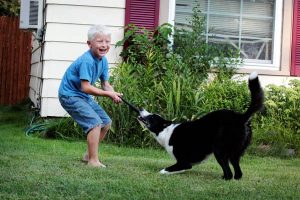Frequently Asked Questions
Q: What is dog agility?
Dog agility is a fun sport for both you and your dog! A dog and handler team negotiate a course of obstacles. The handler provides directional cues for the dog through body motion, speed, hand and voice signals.
Q: What training aids should I bring to agility class?
Treats, really yummy treats
You will need LOTS of yummy treats for your dog! Treats should be soft and small (your dog will get a lot of them). You can use cut up hotdogs, chicken or beef, or you can also purchase something from the pet supply store. Pick something that you don’t give to your dog every day, this way the value for the treat will be higher for your dog and help keep them motivated during your training session.
Toys, toys, toys!

 If your dog likes to play tug or fetch, a toy is extremely useful in dog training as a motivator for your dog (you will still need treats in the early stages of your training). Dogs that enjoy tugging, will enjoy that as a reward for a successful training effort. I suggest having a high value toy, something your dog really loves, and keep that as a training only toy. This will keep the value for that toy very high and keep your dog motivated during training and it will be beneficial when you are ready to throw a reward for your dog. A toy that your dog has around the house on a daily basis may not be as interesting when in a class environment. So find a fun toy for your dog and put it in the training bag only to come out for training sessions.
If your dog likes to play tug or fetch, a toy is extremely useful in dog training as a motivator for your dog (you will still need treats in the early stages of your training). Dogs that enjoy tugging, will enjoy that as a reward for a successful training effort. I suggest having a high value toy, something your dog really loves, and keep that as a training only toy. This will keep the value for that toy very high and keep your dog motivated during training and it will be beneficial when you are ready to throw a reward for your dog. A toy that your dog has around the house on a daily basis may not be as interesting when in a class environment. So find a fun toy for your dog and put it in the training bag only to come out for training sessions.
What if my dog won’t play with a toy in class?
If your dog isn’t interested in toys during class time, it would be helpful to consider buying a treat and tug type of toy (or make one if you or someone you know sews). These typically have a pouch with velcro that allows you to load it with treats, but is still something you can throw as a reward for your dog as you would with a toy.
Leash and collar
Your dog should come to class wearing a flat buckle or clip style collar and a 4-6 foot leash. Your dog should not wear a body harness or head halter. While these are useful in everyday situations with our dogs, they can hinder your dog’s ability to perform the agility tasks you will be working on in class.
Q: What basic training will be helpful for classes?
A formal obedience class is not required prior to taking classes, but basic obedience skills will be very helpful in any agility class. A good recall, stay, sit, down and focus for the handler are all very helpful if your dog is able to do these things when you come to classes. If your dog needs help in foundation obedience skills, these will be covered during the first class.
Q: Can my dog play with other dogs during class time?
No. When you come to class, you and your dog are there to build your relationship, learn agility skills, and how to work together as a team. Your dog should feel that you are much more exciting than any other dog in our class. We want our dogs to know when it is time to work and focus on us during class times.
Q: Will my dog be off leash?
The goal is for your dog to be able to focus and work with you off leash during class times. Beginner classes will work toward being able to accomplish this with their dogs, while the more advanced class students will be expected to have a good off leash control of their dog.
Q: I’m not sure I want to ever compete in a trial, can I participate in agility classes?
Of course! Agility is a fun sport and game to play with your dog, regardless of your goals for taking a class. Many people just enjoy doing backyard agility for something fun to do at home with their dog. If you happen to get bitten by the agility bug, Driven Dog Training is able to help you achieve your competitive goals. Handler/dog teams are taught solid foundation skills in the beginning classes that will help you and your dog progress in your training.
Q: My dog is very nervous, is agility class suitable for us?
Agility can be a great way to socialize a dog and very confidence building for your dog. It introduces them to a new environment, new dogs and people, different noises and objects. It is very important to only progress at the speed of your dog. Your dog may take longer than others to gain confidence. You may even want to repeat the initial beginner class to overcome your dog’s fears.
Q: Do I need to practice at home?